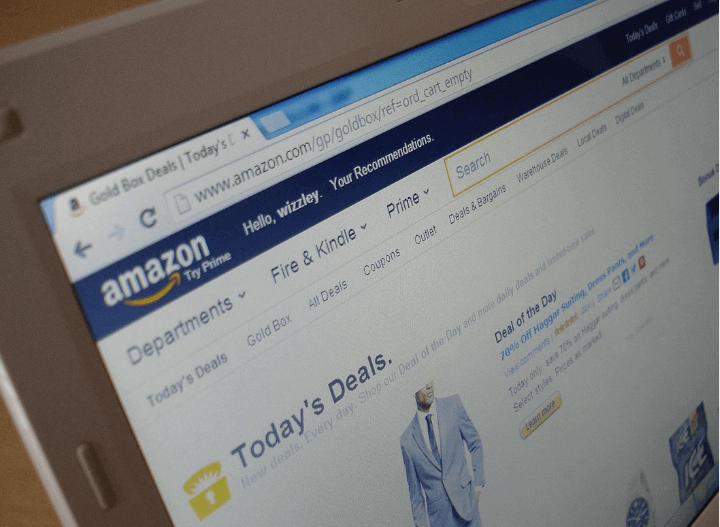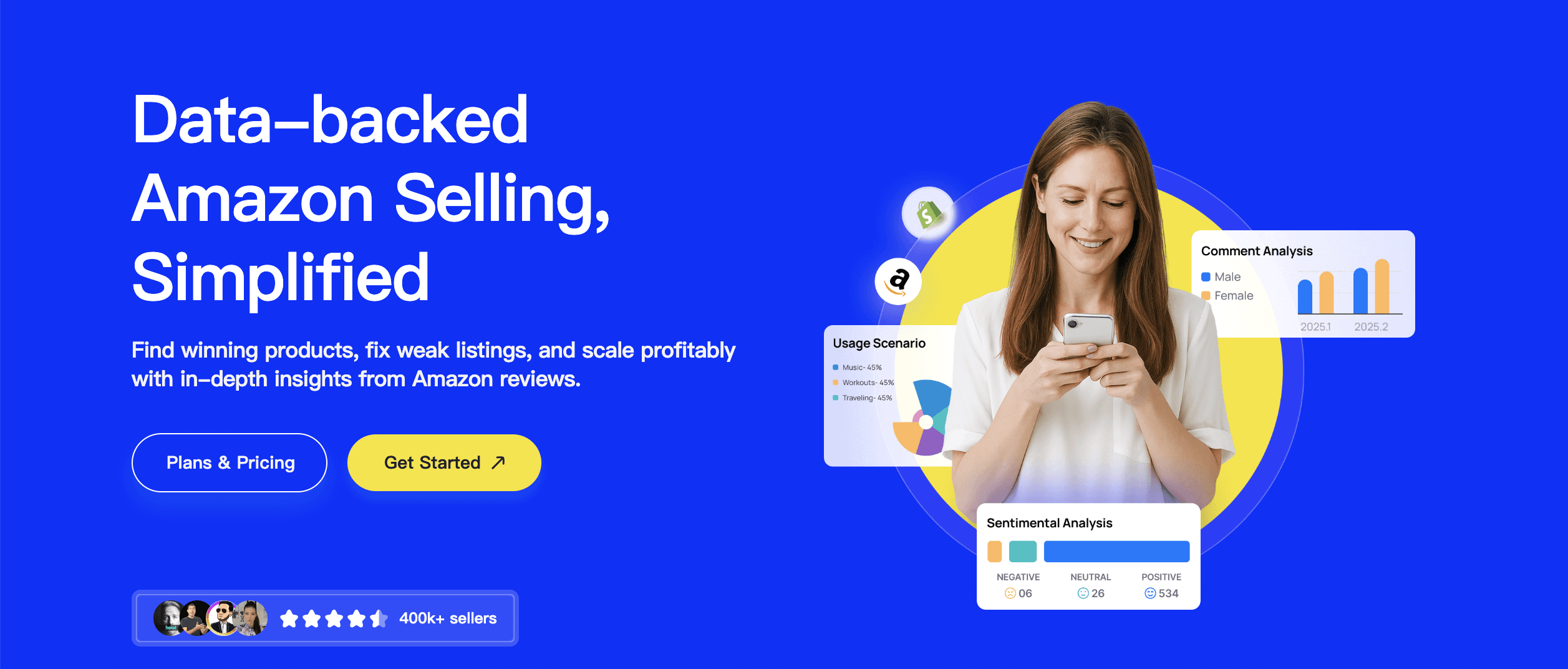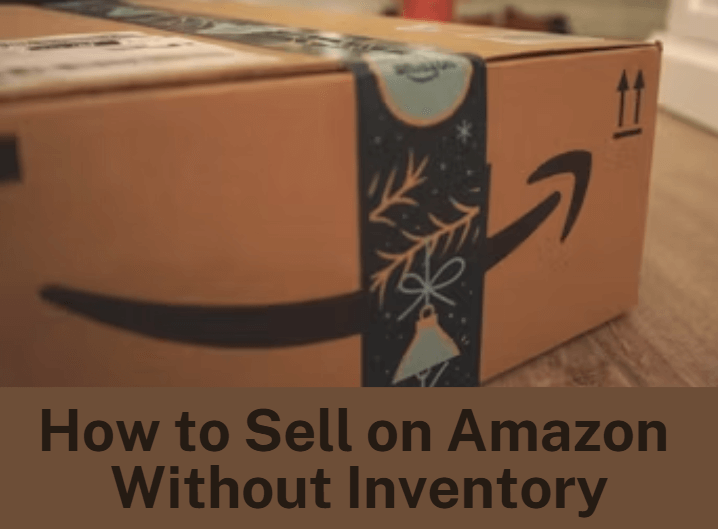Are you interested in running an Amazon business but concerned about purchasing inventory? Many new sellers feel stuck. They fear spending thousands on products that might not sell, stopping their business ideas cold.
However, success doesn't require a warehouse full of goods. Learning how to sell on Amazon without inventory is possible. This is a huge, growing trend. According to Straits Research, the dropshipping industry reached USD 366 billion in 2024 and is expected to surpass USD 470 billion in 2025.
These numbers prove the opportunity is real. This guide will show how to sell on Amazon without inventory for beginners and provide professional tips to make a profit. Let's get started.
How to Sell on Amazon Without Inventory
Selling on Amazon without stock means someone else does the hard work. A partner makes, stores, and ships your products. You just act as the storefront. Orders are passed to your partner, who takes care of the rest.
Let's explore the four most effective ways to accomplish this.
Method 1: Dropshipping on Amazon
Dropshipping is the most popular way to sell on Amazon without inventory. In this model, you list products you don't actually own. When a customer orders, you buy that item from your supplier. Finally, the provider ships the products straight to the buyer. Your profit is the difference between your Amazon price and the supplier's cost.
How Dropshipping Works on Amazon
Get a Professional Seller account. It has a monthly fee and is needed for dropshipping.
Look for popular products. Then, find a great supplier who ships fast and provides quality items.
Make the Amazon product page with a title, description, and photos. Write it skillfully to draw in customers.
As soon as a sale occurs, place the order with your supplier. Please let them know the shipping address of the customer.
You represent the business. You must be responsible for answering any consumer inquiries, complaints, and returns.
Amazon's dropshipping policy has strict limitations. You can't just buy from another retailer, like Walmart, to fill orders; this will get your account suspended. You must be the seller on all paperwork. The packing slips must bear your trademark, and you manage all returns.
Pros:
No need to buy products in advance.
A vast array of products is available for you.
Run your business with Wi-Fi from any location.
Cons:
Low prices are maintained by significant competition. Typically, margins are thin (10–20%).
You rely 100% on your supplier. Their mistakes may harm your account.
Handling returns for never-seen products is tricky.

Method 2: Amazon Merch on Demand (Print on Demand)
Choosing Amazon Merch on Demand is a wise decision. Amazon's print-on-demand (POD) service is what it is. Your artwork is uploaded, and Amazon handles the rest. After a purchase, Amazon packs, ships, and prints the item. A royalty is paid to you for each sale.
How Amazon Merch on Demand Works
You must apply and wait for an invite to the Amazon Merch on Demand program. Once approved, upload your art. Pick products, like shirts or mugs, and set your price. Your products will be sold and shipped by Amazon, from creating listings to handling all printing, shipping, and service. You just collect your royalties.
Pros:
It's 100% free to upload designs.
A good design can earn money for years.
You can reach millions of Prime members.
Cons:
You must wait to be accepted.
There are many people in the market.
The quality of a product or service is beyond your control.
Method 3: Kindle Direct Publishing (KDP)
The self-publishing platform offered by Amazon is known as Kindle Direct Publishing (KDP). You may sell both paperbacks and e-books with it and have no inventory. Since print-on-demand is used for paperbacks, Amazon prints and distributes one when it sells. It is ideal for those who write novels, manuals, or journals.
How KDP Works
First, create your book and a professional cover. A KDP account is free. Add your files, choose keywords, and write a clear title and description. After deciding on a price and viewing your royalty (which can reach 70% for ebooks), click "Publish."
Pros:
It's 100% free to publish.
Ebooks are very profitable.
A good book sells for years.
You become a published expert.
Cons:
Writing a good book takes time.
You must market your book to get sales.
Method 4: The Amazon Associates Program (Affiliate Marketing)
This is the most straightforward and "hands-off" method. As an Amazon Associate, your job is to recommend products. You sign up for free and get special blog links or YouTube links. When someone clicks and buys within 24 hours, you earn a commission.
How Amazon Associates Works
The Amazon Associates Program is most effective if you already have an audience, like a blog or YouTube channel. You apply for the free program and identify your audience's needs. Then, create content and use your links. A commission will be paid to you for any sales.
Pros:
No seller account, customers, or products.
Recommend millions of products.
You earn on the customer's entire cart.
Cons:
Commission rates are low.
You must bring your own traffic.
You send your traffic to Amazon.
These four methods are great for selling on Amazon without inventory. Each path lets you start a business without the financial risk of holding stock.
The Benefits of Selling Products on Amazon Without Inventory
One of the best strategies for new sellers is to sell on Amazon without inventory. The perks are huge because they get rid of the biggest business risks.
Extremely Low Start-Up Costs: The best perk is the low cost. You don't need thousands for stock and can start with USD 0. You only pay for a product after a customer pays you.
No Inventory Management: Forget packing, shipping, or storing. You'll never have unsold boxes. This frees up your time to focus on marketing and growing your business.
Low Risk, High Growth: Your money risk is almost zero. You can safely test new product ideas. If an item doesn't sell, you lose nothing. You grow by adding listings, not cash.
Ultimate Flexibility: You can use a laptop to manage your company anywhere. A warehouse is not a requirement for you. This gives you amazing freedom and a flexible lifestyle.
In short, these benefits make it much easier and safer for anyone to build an Amazon business from scratch.
How to Make Money by Selling Things on Amazon Without Inventory
Picking a model is just the first step. You need a smart strategy, actually, to make a profit. Here's how to sell items on Amazon without inventory profitably:
Strategy 1: Find a Profitable, Low-Competition Niche
This is the golden rule. Avoid attempting to compete in large categories.
Sell more than just "T-shirts." Rather, market "T-shirts for Corgi lovers who like hiking."
Make sure not to write a "recipe book." Alternatively, compose a "5-Ingredient Vegan Cookbook for Busy College Students."
A tiny, specialized group of people is called a niche. When you target them, your product stands out and has less competition. A great tip is to use Amazon's search bar. See what it suggests as you type. This shows you what real people are looking for.
Strategy 2: Master Your Amazon Product Page
Like Google, Amazon also functions as a search engine. Being on the first page of search results is essential for earning money.
Title: Put your main keywords in the title naturally.
Bullet Points: Use all 5 bullet points to show the benefits. Who is this for? Why is it a good gift?
Description: Tell a story that hooks the buyer.
Keywords: Use all the "backend" keyword slots in your account. Encourage users to use relevant search phrases like "funny hiking shirt" or "corgi mom gift."
Strategy 3: Price for Profit, Not Just Sales
Often, new merchants set their prices too low. It's a huge error.
For Dropshipping: Include the item's cost and all Amazon fees (often 15%) in your price. You must make at least 15% to 20% even after that.
For Merch/KDP: Being the cheapest isn't enough. A USD 19.99 shirt often sells better than a USD 13.99 one because it seems better quality. Price your item in the middle of your competition.
Following these three strategies is the key. They work together to help you get found and make a profit.
Tips for Selling on Amazon Without Inventory
You're all set to go! To assist you in succeeding on your journey, here are some last tips:
Tip 1: Find and Vet Reliable Partners
This is the most important rule for dropshipping. A bad supplier will quickly get your account suspended. Before you partner with anyone, ask them these questions:
"Do you dropship for other Amazon sellers?"
"Can you use 'blind' or branded packing slips with my store name?"
"How fast do you handle orders and ship them?"
"How do you handle returns or out-of-stock items?" If they appear perplexed by these inquiries, look for an alternative supplier.
Tip 2: Focus on High-Quality Design and Content
Regarding Merch on Demand and KDP, quality is what sets you apart.
Merch: Don't use blurry images or plain text. Take time to learn design, or hire a good designer. A great design is a one-time investment that can pay you for years.
KDP: The appearance of your book's cover and content must be professional. No matter how good your book is, sales will be halted by a poor cover. A poor book will receive one-star reviews.
Tip 3: Use Tools to Analyze Reviews and Find Gaps
How does one identify a fantastic niche? Take note of what customers have already said. Read their reviews to discover what people like and dislike about your competitors.
"I wish it came in a V-neck," states a review for a "Cat Dad" shirt; therefore, you should design one!
If a "how-to" book review states, "It was good but missed an advanced chapter," your book should have that chapter.
Reading thousands of reviews is hard. Amazon Review Analysis tools, like VOC AI, are game-changers. These tools use AI to scan thousands of comments instantly. They show you common complaints, what people love, and new trends. This aids in identifying market gaps so that you can produce the ideal book or product.

Alt:
Tip 4: Go over Amazon's Policies
Amazon is not a forgiving platform. They are "customer-obsessed," so they hold sellers to a very high standard. Read all the rules for your chosen model, like the Dropshipping Policy or Merch Policy. Breaking a rule, even by accident, can get your account suspended.
Conclusion
Selling products on Amazon without inventory is the best way to start in e-commerce in 2025. You don't need a huge budget. You may get started with virtually no risk using strategies like dropshipping, Merch, or KDP.
This isn't a quick-money trick; you must start a legitimate business. A specialty, high quality, and familiarity with Amazon's policies are necessary for success.
Start by selecting a model that best suits your abilities because the opportunity is genuine. Finding your winning ideas is not a simple task. A helpful Amazon Review Analysis Tool can help.
FAQs about How to Sell on Amazon without Inventory
Q1: How much does Amazon take from a USD 100 sale?
Typically, Amazon charges 15% for referrals. They would, therefore, receive USD 15 from a sale of USD 100. Each category has a different fee; for instance, some gadgets cost 8% while clothes cost 17%. For models without inventory, this referral fee is the primary expense you should budget for.
Q2: Can I earn USD 1000 a month selling on Amazon?
Earning USD 1,000 a month is a realistic goal, but it takes time. Many sellers earn this much, and most new sellers profit within their first year. Within six to twelve months, you can earn a profit of between USD 1,000 and USD 25,000 per month with consistent work.
Q3: How do people make money on Amazon without selling physical products?
There are a few great ways. The most popular is Kindle Direct Publishing (KDP), where you sell digital files like ebooks. You can also earn commissions by referring buyers to other people's products through the Amazon Associates (affiliate) program. Both let you make money without handling physical items.
Q4: Can I sell on Amazon with no product?
Yes, that's what "no-inventory" models are all about. Dropshipping is listing a product and having a supplier ship it. KDP, or print-on-demand, only produces the product (such as a book or shirt) after a customer orders it. You can also just link to products as an affiliate.






